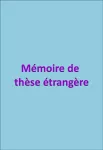| Résumé : |
(auteur) Detailed change detection in buildings using airborne laser scanning data (ALS data) has become possible with the availability of multi-temporal ALS data sets. In this thesis we present a methodology for building change detection in urban scenes, which is composed of two main parts: the classification of point clouds of an urban scene and the detection of changes in buildings. A classification methodology is put forward to solve the problem of how to detect buildings in point clouds and how to distinguish the building roofs, building roof elements, and building walls. The change detection methodology is not only used to detect changes but also aims to interpret the type of change that occurred to a building. The two methodologies are suitable for application to raw ALS laser points. They do not require the ALS data to be organised in Digital Surface Models.
The thesis consists of seven chapters. Chapter 1 gives the motivation of this research and an introduction to the background of the two main topics mentioned above. Research problems and questions are raised, and goals and objectives are defined on the two topics. Furthermore, the limits of the research scope of this thesis are set. Chapter 2 introduces the study area used in this thesis, the available data, including the data quality and the data organization, and some pre-processing steps of the data.
Chapter 3 describes the methodology of the classification, explaining the entities, features, classifiers and the classification strategy. We introduce a classification procedure that combines classifications of three different entities: points, planar segments, and segments obtained by mean-shift segmentation. Seven types of objects, namely, water, ground, vegetation, roof, roof element, wall and undefined object, are distinguished based on feature values of the entities. Some features were already defined in literature. Other features are defined by us. Five commonly used classifiers (rule based classification, Random Tree, AdaBoost, SVM, and ANN) are tested. The rule-based method provides over 99% accuracy for the ground and roof classes, and a minimum accuracy of 90% for the water, vegetation, wall and undefined object classes, resulting in an overall accuracy of 97%. The accuracy of the roof element class is only 70% with the rule-based method, or even lower with other classifiers. All experimental results for the classification methodology are presented and discussed in chapter 4. These results include the evaluation of the classification accuracy, comparisons between different classifiers and comparisons between different features derived from the different entities.
Chapter 5 explains the methodology of the change detection comprising a point-based change detection method and an object-based change analysis. The detection process starts with two data sets that are classified using the classification methodology in chapter 3. Next, a point-to-plane surface difference map is generated by merging the two data sets to be compared. By applying rules to the surface difference map the change status of points is set to "changed", "unchanged", or "unknown". Rules are defined to solve the problems caused by the lack of data. "Unknown" are locations where due to lack of data in at least one of the epochs it is not possible to reliably detect changes in the structure. Points on buildings labelled as "changed" are re-classified into changes related to roofs, walls, dormers, cars, constructions above roofs and undefined objects in a second classification step. Next, all the classified changes are grouped to changed building objects. Geometric descriptions of the changed building objects, such as the location of the centre point of the change objects, the height, area and volume of the change objects, are derived from their minimum 3D bounding boxes. Performance analysis showed that 80% - 90 % of the real changes are found, of which approximately 50% are considered relevant. The results of the change detection and analysis and their accuracy are discussed in chapter 6.
Finally, chapter 7 draws the main conclusions from the test results obtained with the classification and the change detection methodology. Limitations of our methodologies are summarized and potential solutions to these limitations are suggested. |


